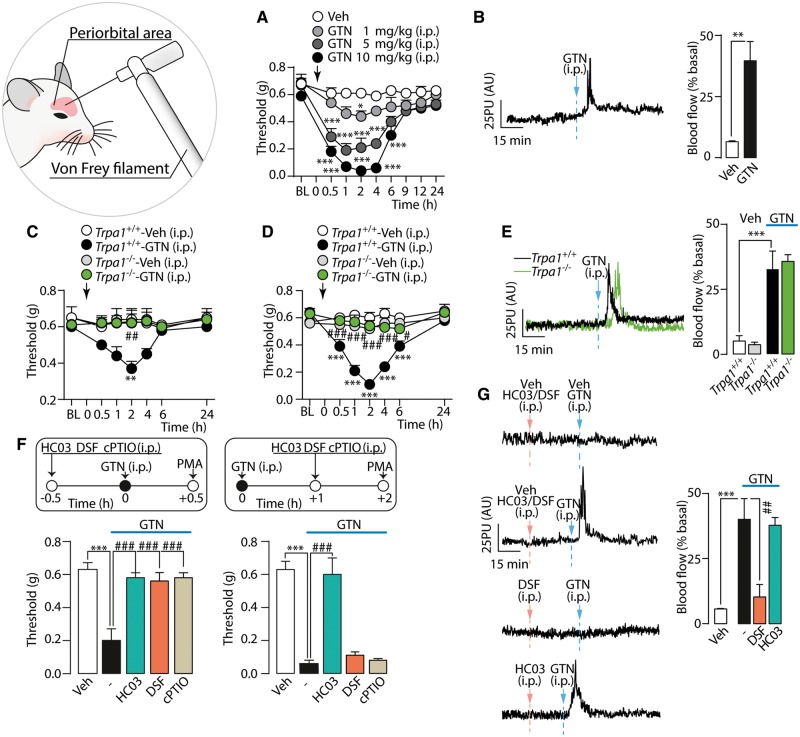Figure 1.
GTN induces PMA via a TRPA1-dependent mechanism. (A) Dose- and time-dependent PMA evoked by GTN in C57BL/6 mice. (B) Representative traces and pooled data of the increases in periorbital skin blood flow evoked by GTN (10 mg/kg). PMA evoked by (C) low (1 mg/kg, i.p.) and (D) high (10 mg/kg, i.p.) dose of GTN, in Trpa1+/+ and Trpa1−/− mice. (E) Representative traces and pooled data of the increases in periorbital skin blood flow evoked by GTN (10 mg/kg) in Trpa1+/+ and Trpa1−/− mice. (F) Pretreatment with systemic (i.p.) HC-030031 (HC03; 100 mg/kg), disulfiram (DSF, 100 mg/kg) or cPTIO (0.6 mg/kg) abates PMA measured 0.5 h after GTN (10 mg/kg). HC03 but not DSF and cPTIO (given after GTN) reduces PMA measured 2 h after GTN. (G) Representative traces and pooled data of the increases in periorbital skin blood flow evoked by GTN (10 mg/kg). DSF but not HC03, both given before GTN abolishes the increase in blood flow induced by GTN. BL = baseline mechanical threshold; Veh = the vehicle of GTN. Dash (‐) indicates combined vehicles of treatments. Arrows indicate times of drug administration. AU = arbitrary units; PU = perfusion units. Error bars indicate mean ± SEM, 6–8 mice per group. *P < 0.05, **P < 0.01, ***P < 0.001 versus vehicle, Trpa1+/+-vehicle and #P < 0.05, ##P < 0.01, ###P < 0.001 versus Trpa1+/+-GTN or GTN; one-way or two-way ANOVA with Bonferroni post hoc correction, and Student’s t-test.

